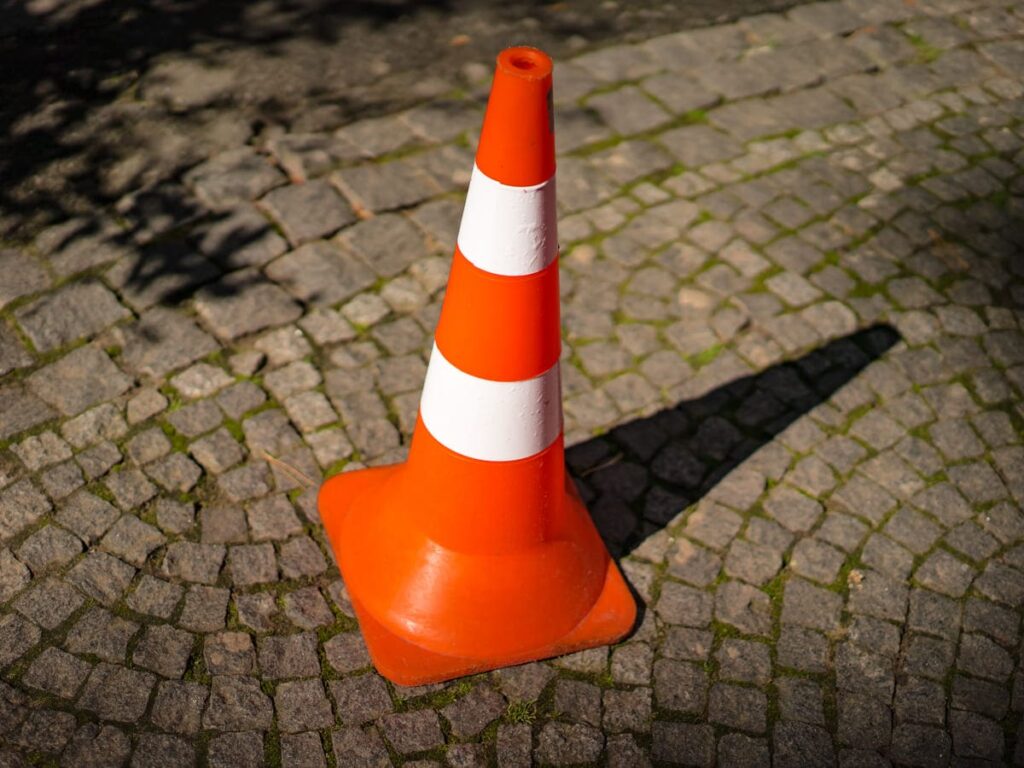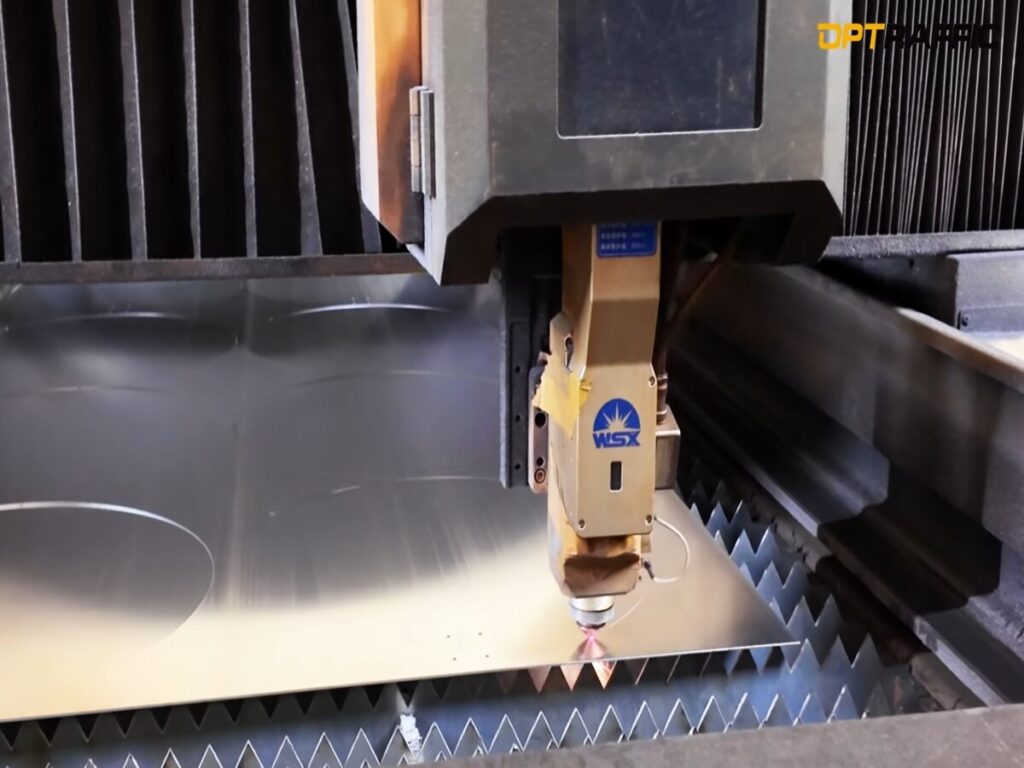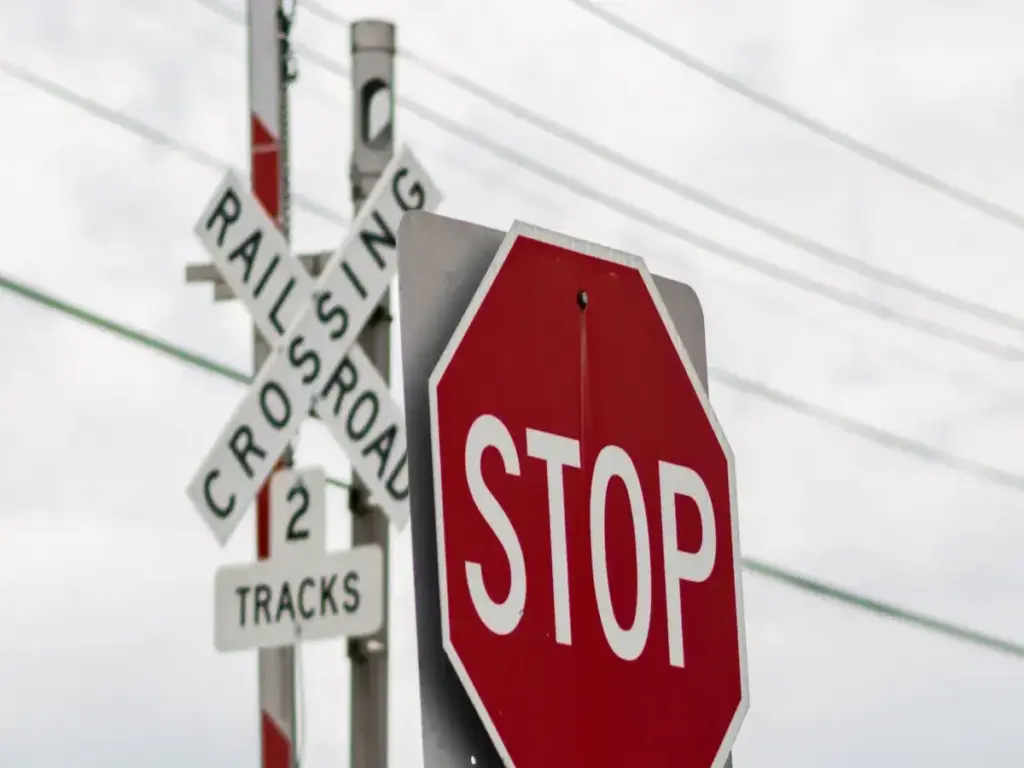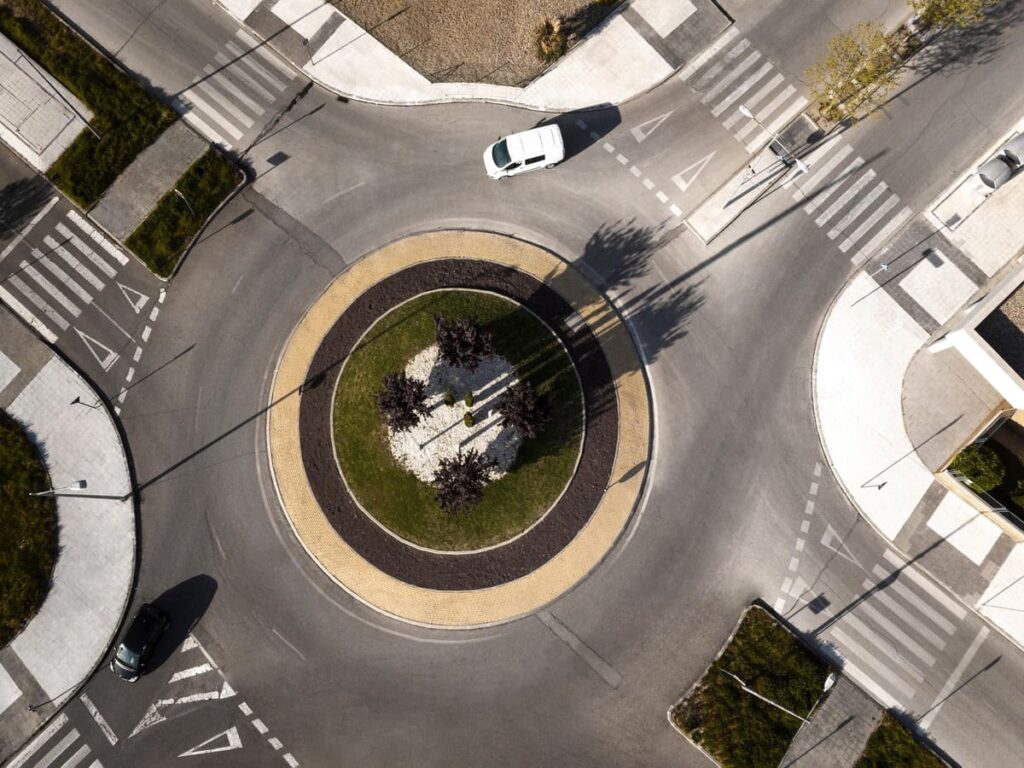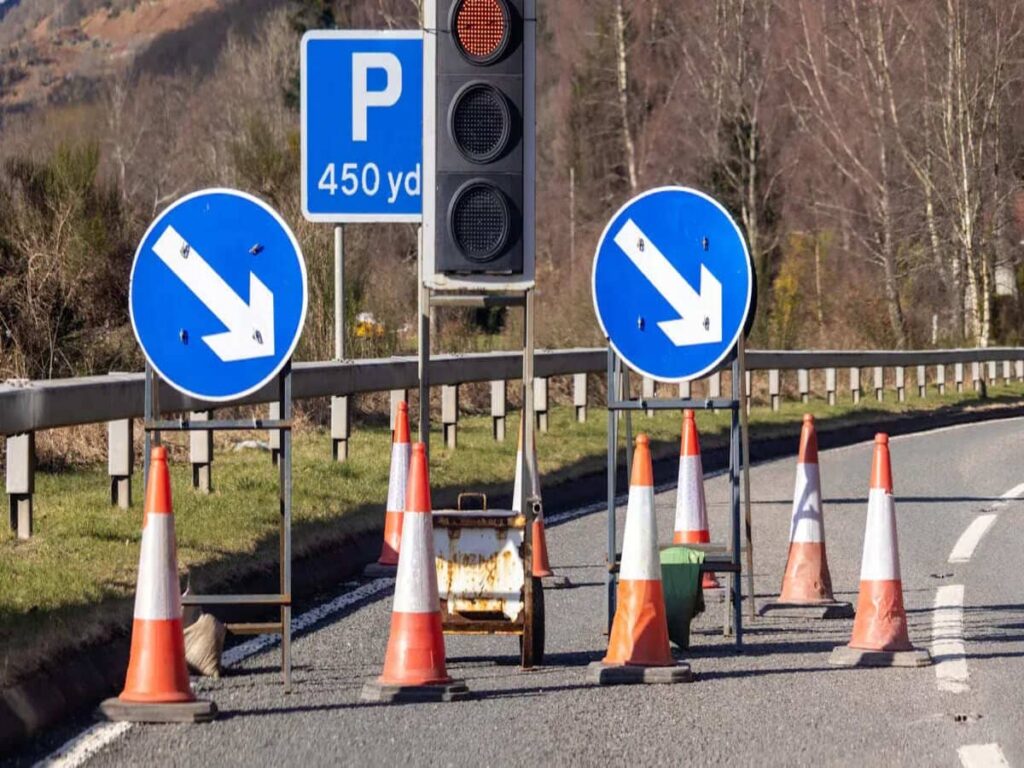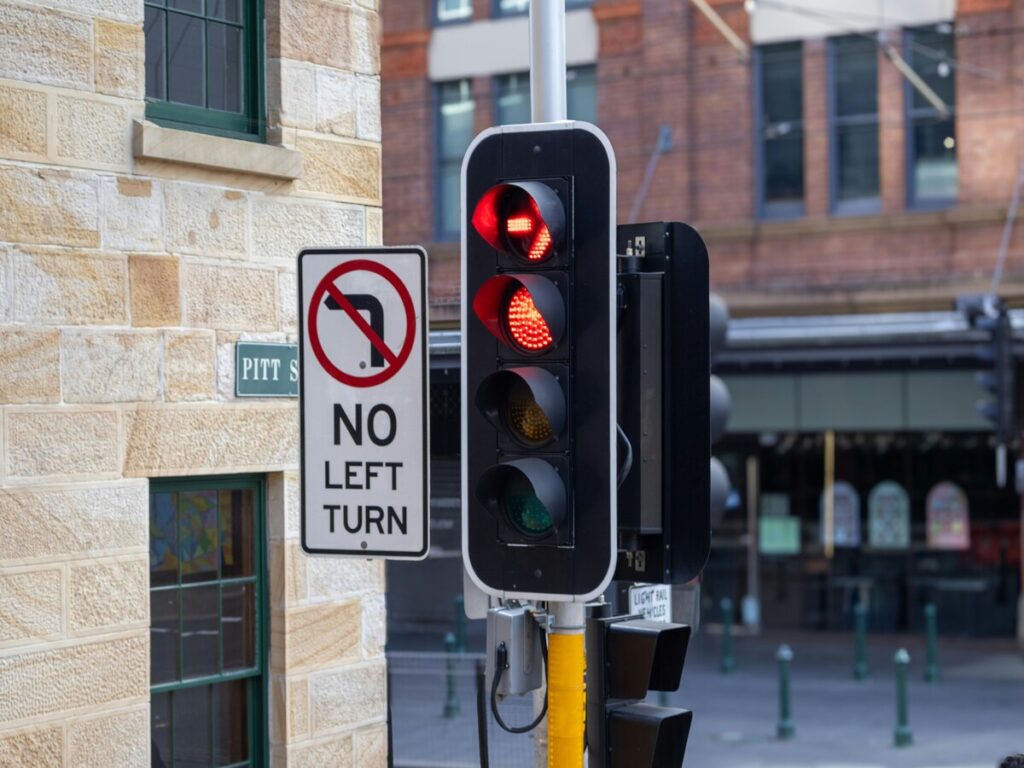
تحتوي الألواح المركبة في علامات التحكم في حركة المرور على طبقات من المواد. غالبًا ما يستخدمون صفائح الألمنيوم ذات القلب غير الألومنيوم. هذا التصميم ذو الطبقات يجعل العلامة خفيفة وقوية. تعمل هذه اللوحات بشكل جيد في العديد من الأماكن. يمكنهم الوقوف في وجه سوء الاحوال الجوية والتعرض للضرب. تختار العديد من المجالس الألواح المركبة لأنها تدوم لفترة طويلة. كما أنها تساعد في توفير المال مع مرور السنين. تصميمها يجعل من السهل نقلها ووضعها على جوانب الطرق.
OPTRAFFIC offers durable composite panel علامات المرور للبيع التي تلبي المعايير الأسترالية, providing long-lasting, weather-resistant solutions for your traffic control needs. Our composite panels are easy to install and cost-effective, helping to keep roads safer and projects within budget.
Composite Panels Explained
Structure and Materials
Composite panels in traffic signs have layers. Makers use two thin aluminium sheets stuck to a solid core. The core is often polyethylene, fire-safe polyethylene, or mineral-filled compounds. This makes the panel light and strong.
- Dibond aluminium composite panels have two aluminium sheets and a polyethylene core.
- These panels do not get damaged by weather, stay light, وتدوم لفترة طويلة.
- The surface can be printed on, لذا فهم يعملون بشكل جيد في الخارج.
- Panels come in many colours and finishes, so you can print in different ways.
- The top aluminium layer usually has a polyester or PVDF coating to make it last longer.
- The bottom layer often has a primer coating for more protection.
ملحوظة: Composite panels give a flat, hard surface. This helps with reflective sheeting and digital printing, which is needed for clear traffic signs.
The table below shows the main materials used in each part of a composite panel:
| Panel Component | Most Widely Used Materials | Key Properties and Usage |
|---|---|---|
| Core | البولي إيثيلين (PE), Fire Retardant (FR) البولي إيثيلين, Mineral Filled (MF) | ضوء, fire-safe, keeps the panel strong |
| Outer Layers | صفائح الألمنيوم | Make the panel strong and tough |
| الانتهاء من السطح | PVDF coating, طلاء مسحوق | Help the panel last in bad weather and keep its colour |
Most composite panels for traffic signs are 2 مم ل 6 سماكة. The aluminium skin is usually 0.12 مم ل 0.50 سماكة. Common sizes are 1220 مم x 2440 مم و 1500 مم x 3050 مم. These panels are light and stiff, so they are easy to carry and put up.
To learn more about choosing the right aluminium thickness based on wind load and sign size, اقرأ مدونتنا: كيفية اختيار سمك الألمنيوم لعلامات التحكم في حركة المرور على أساس حمل الرياح وحجمها.
Comparison with Traditional Sign Materials
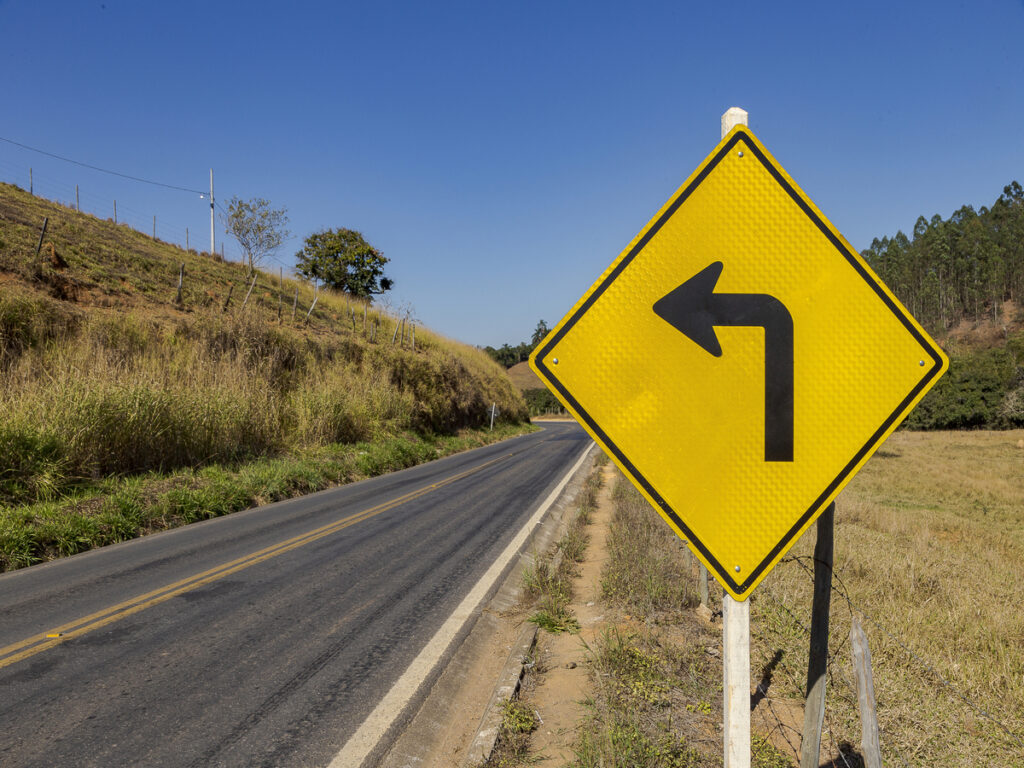
Composite panels are different from old materials like aluminium and steel. They mix the good things about metals and plastics. This makes them great for modern road signs.
- Composite panels are lighter than solid aluminium or steel, so they cost less to move and put up.
- The panels are strong like steel but bendy and light like aluminium.
- The surface does not rust, يختفي, or get damaged by weather, لذلك تستمر العلامات لفترة أطول في الخارج.
- Fire-safe types are made for places that need extra safety.
The table below compares composite panels with old sign materials:
| نوع المواد | Typical Thickness (مم) | وزن | متانة (سنين) | احتياجات الصيانة | الميزات الرئيسية |
|---|---|---|---|---|---|
| Aluminium Composite Panels | 2 - 6 | خفيف الوزن | 5 - 10 | قليل; سهل التنظيف | صعب, مقاوم للطقس, good for printing |
| الألومنيوم | 1.2 - 3.0 | ضوء | 7 - 10 | واسطة; may lose colour | لا يصدأ, يدوم طويلا |
| فُولاَذ | 2.5 - 3.0+ | ثقيل | 5 - 7 | واسطة; may rust | قوي جدا, needs rust protection |
| فينيل | 3 - 6 | ضوء جدا | 3 - 5 | قليل; may lose colour | رخيص, ليست قوية جدا |
| خشب | 10+ | ثقيل | 3 - 8 | عالي; needs sealing | Can rot, not good in bad weather |

Composite panels give a flat, steady surface for reflective sheeting and pictures. هذا مهم لعلامات المرور, which must be easy to see and read all the time. The panels also need fewer fixing points, so it costs less to put them up.
نصيحة: Picking composite panels can help councils and workers save time and money when putting up and looking after signs, while still keeping them safe and easy to see.
Benefits of Composite Panels
Lightweight and Strong
Composite panels are both light and strong. Makers stick thin aluminium sheets to a solid core. The core is often made from polyethylene. This makes the panels much lighter than solid aluminium sheets. Workers can lift and put up these panels more easily. This helps them finish the job faster and saves money on work. Composite panels are strong for their weight. They stay flat and stiff, even for big signs. The panels do not bend or twist much. This is good for signs that must stay clear and steady in all weather.
Because composite panels are light, posts and supports do not get tired as quickly. This helps the whole sign last longer.
Weather and Impact Resistance
Composite panels stand up well to bad weather and hits. The aluminium outside keeps rain, رياح, and sun away from the sign. The core gives extra strength, so the panel does not break or crack easily. These panels keep their shape and colour for many years outside. They do not rust or rot like steel or wood. This makes them a good choice for road signs in towns and the countryside.
- Composite panels can handle heavy rain and strong winds.
- They do not fade in the sun or get hurt by things hitting them.
- The panels do not soak up water, so they stay strong when wet.
التكلفة والصيانة
Composite panels help save money over time. They are cheaper to move and put up because they are light. يدومون لفترة طويلة, لذلك لا تحتاج إلى استبدالها كثيرًا. Many composite panels use materials that can be recycled, وهو أمر جيد للكوكب.
- Aluminium composite panels can be recycled. Both the core and the aluminium sheets can be used again.
- Recycling aluminium uses only about 5% of the energy needed to make new aluminium.
- The panels last for years, so councils do not need to buy new signs as often. This saves money and means less rubbish goes to landfill.
Picking composite panels helps meet green building rules and keeps the environment safe. أنها تدوم لفترة طويلة ويمكن إعادة تدويرها, so they are a smart choice for new traffic signs.
Types of Composite Panels
Honeycomb Panels
Honeycomb panels have a core made from aluminium foil. The foil is shaped into small hexagon cells. The outside layers are made from strong aluminium alloys. These layers can be 0.4mm to 3.0mm thick. Special coatings help the panels look good and last longer. The honeycomb core keeps the panel light but tough. This design makes the panel very stiff and hard to break.
| Structural Feature | وصف |
|---|---|
| Faceplates Material | High-quality aluminium alloys (على سبيل المثال, 3003-H24, 5052-H14) |
| Faceplates Thickness | 0.4mm to 3.0mm |
| العلاجات السطحية | Fluorocarbon coating, roll coating, oxidation, وأكثر |
| Honeycomb Core Material | Aluminium foil (3003 أو 3004 سبيكة) |
| Honeycomb Cell Size | 5مم, 6مم, 8مم, 10مم, 12مم |
| الخواص الميكانيكية | High strength-to-weight ratio, excellent rigidity, مقاومة التأثير |
| Additional Properties | خفيف الوزن, مقاوم للتآكل, متينة, supports reflective coatings |
Honeycomb panels are used for road signs and billboards. هم خفيفون, حتى يتمكن العمال من وضعهم بسهولة. The panels do not rust or get damaged by water. This makes them good for outdoor signs. Many traffic signs use honeycomb panels because they are strong and last in bad weather.
Honeycomb panels work well with reflective coatings. This helps drivers see the signs at night.
Foam-Core Panels
Foam-core panels have a foam centre between two thin layers. PVC foam boards are often used for these panels. إنها خفيفة وسهلة التحرك. The foam stops water from getting inside. This means the panels do not bend or break when it rains. They also do not get damaged by chemicals or sunlight, so colours stay bright.
- Foam-core panels are easy to cut, drill, and print on.
- The surface keeps printed words and pictures clear.
- These panels are best for indoor or short-term signs.
- People use them for event signs, safety notices, and signs inside buildings.
Foam-core panels are picked for signs that need to be moved a lot. You can hang them from ceilings or put them on walls without trouble.
Fibreglass-Reinforced Panels
Fibreglass-reinforced panels have a plastic or resin base with fibreglass inside. The fibreglass makes the panels stronger and tougher. These panels do not get damaged by chemicals or bad weather. أنها تستمر لفترة طويلة في الخارج. Studies show that fibreglass makes these panels last longer and work better.
People use these panels for stop signs, علامات منطقة المدرسة, وعلامات التحذير. They are good for places where signs must be strong and easy to clean. Many councils use fibreglass-reinforced panels for traffic signs that face harsh weather.
Fibreglass-reinforced panels last a long time and stand up well to tough weather.
When to Use Composite Panels in Traffic Control Signs
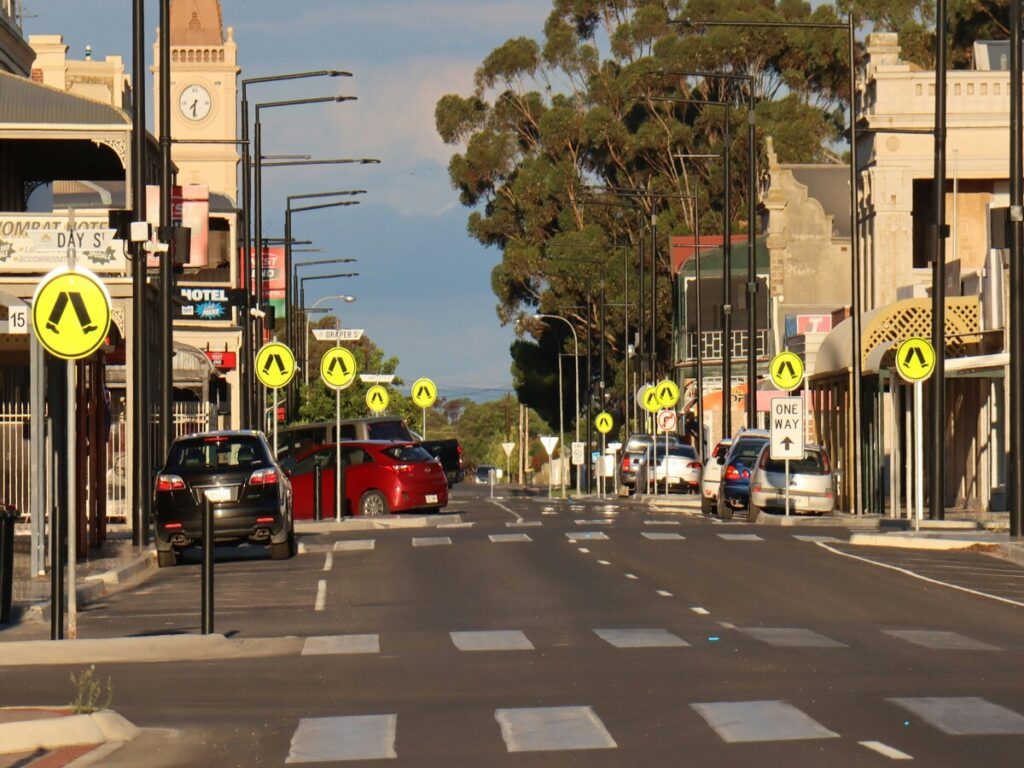
Ideal Applications
Composite panels are good for many traffic control signs. They are best for big traffic control signs where weight is important. Workers can lift and put up these panels more easily. This is helpful on highways and country roads. These roads need large signs that people can see from far away. Composite panels are also good for projects where money is tight. Councils and builders save money on moving and putting up the signs because they are light.
Composite panels work well in places with bad weather. Roads by the sea, المصانع, and busy city streets often have strong winds, مطر, والهواء القذر. The panels do not rust or break down, so they last longer in these places. Many councils use composite panels for building site signs, short-term detours, and warning signs in the countryside.
نصيحة: Composite panels are a clever pick for signs that must be moved or swapped often, like event signs or roadwork notices.
These points help you know when composite panels are the best for traffic signs:
- The panels must be safe in crashes. They should pass tests for breakaway sign supports without more crash tests.
- The panels must be fixed well. Washers under bolts help keep the panel in place.
- The material should be like tested and approved sign boards.
- The panels must work with breakaway supports to keep roads safe.
الاعتبارات البيئية
Outdoor traffic signs face many tough things. Composite panels handle these problems well. They do not get hurt by sunlight, ماء, أو الهواء القذر. This makes them good for long use in cities, near the sea, وفي المصانع. Special coatings help the panels keep their colour and stop cracks. The panels do not bend or rust, even after years in the sun and rain.
- Sunlight can make signs fade and crack, but special coatings protect them.
- Water from rain or wet air does not hurt the core or aluminium layers.
- Dirty air and salt near the sea do not make the panels rust.
Composite panels keep their shape and look nice for many years. Good coatings and careful making help the panels stay strong and bright, حتى في الأماكن الصعبة. Fibre-reinforced cores help stop damage from sunlight and heat changes. This keeps the sign easy to read and safe for drivers.
Limitations and Alternatives
Composite panels have many good points, but sometimes other materials are better. In places with lots of bumps, like busy city centres or near schools, traffic control signs might get hit more. Composite panels can break inside, which is hard to see without special tools. في هذه الحالات, councils often pick solid aluminium or steel panels. These materials are stronger and safer in fires.
| سيناريو | Recommended Material | سبب |
|---|---|---|
| كبير, lightweight signs | الألواح المركبة | من السهل وضعها والتحرك |
| Coastal or polluted environments | الألواح المركبة | Do not rust or fade |
| High-impact or high-traffic | Aluminium or steel | Stronger and last longer |
| Fire safety critical areas | Aluminium or steel | Safer in fires |
Old materials like aluminium and steel are good for signs in places with lots of bumps or strict fire rules. Solid aluminium panels are stronger and last longer in bad weather. Steel panels are very stiff but heavier. Councils often use these for signs near schools, المطارات, والمستشفيات.
ملحوظة: Composite panels are still a top pick for most outdoor signs, especially where weight, يكلف, and weather resistance matter most.
Composite panels are light, قوي, ويمكن أن تتعامل مع سوء الاحوال الجوية. They work well for big traffic control signs and places with tough weather. أحيانا, aluminium or steel is better if signs might get hit a lot. Every sign project is different. Councils and builders need to think about the weather, مال, and safety before picking a material. Good planning makes sure traffic signs stay clear and last a long time.
To learn more about how material choices impact the future of traffic signs, اقرأ مدونتنا: كيف تشكل خيارات المواد مستقبل علامات المرور للبيع في أستراليا.
التعليمات
What makes composite panels suitable for outdoor traffic control signs?
Composite panels can handle rain, رياح, والشمس. They do not rust or rot over time. هذه اللوحات خفيفة, so workers can put them up fast. Councils pick them for signs that need to last outside for years.
Can composite panels support reflective sheeting?
نعم, composite panels have a flat, steady surface. This helps reflective sheeting stick well. Drivers can see these signs clearly, حتى في الليل أو في الطقس السيئ.
Are composite panels environmentally friendly?
Many composite panels use materials that can be recycled. Aluminium and some cores can be used again. Recycling uses less energy than making new materials. This helps keep the environment safe.
How do composite panels compare to solid aluminium for traffic control signs?
| ميزة | الألواح المركبة | Solid Aluminium |
|---|---|---|
| وزن | أخف | أثقل |
| متانة | عالي | عالية جدا |
| يكلف | أدنى | أعلى |
| مقاومة للطقس | نعم | نعم |
Composite panels are lighter and often cost less than solid aluminium. Both types last a long time when used outside.

